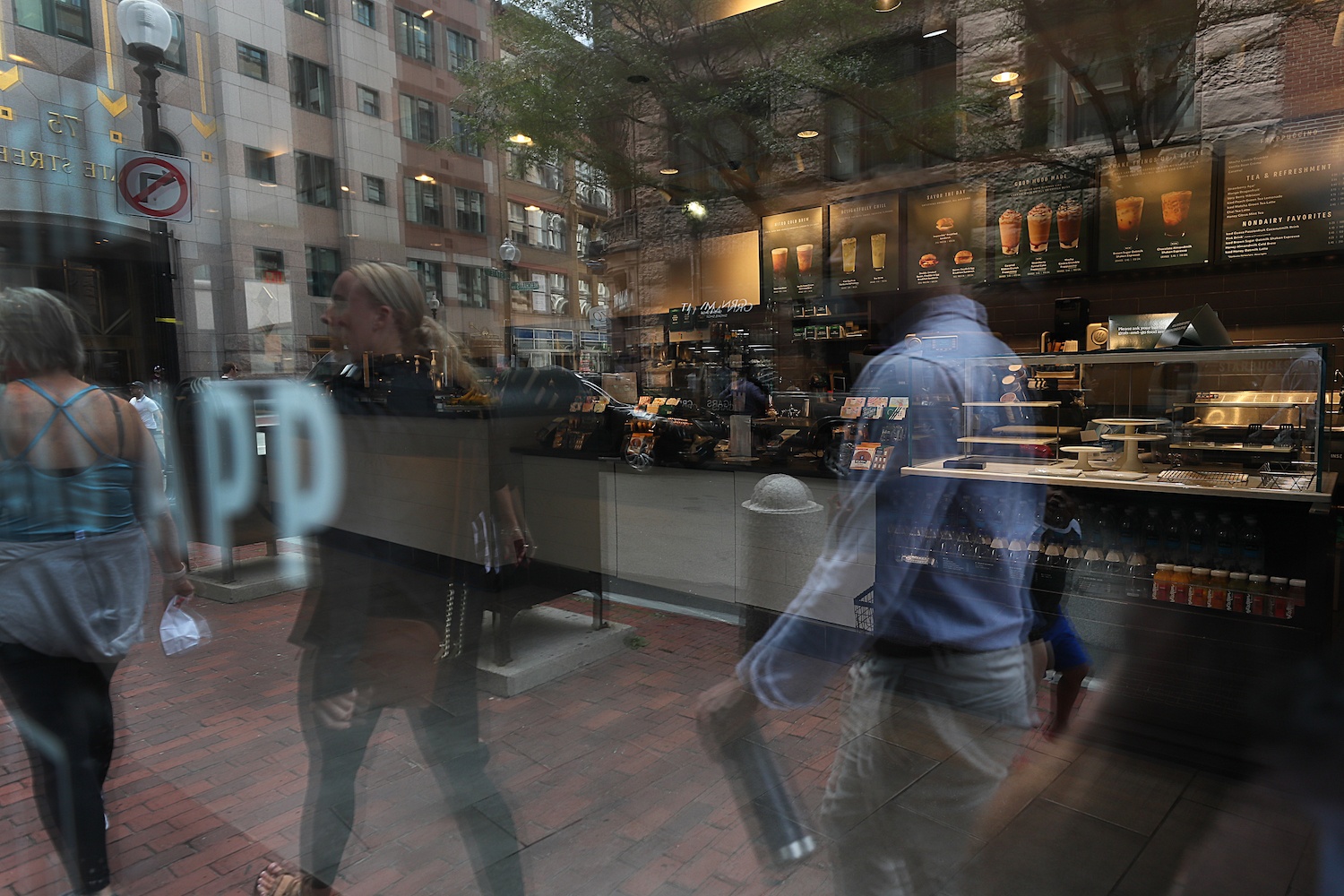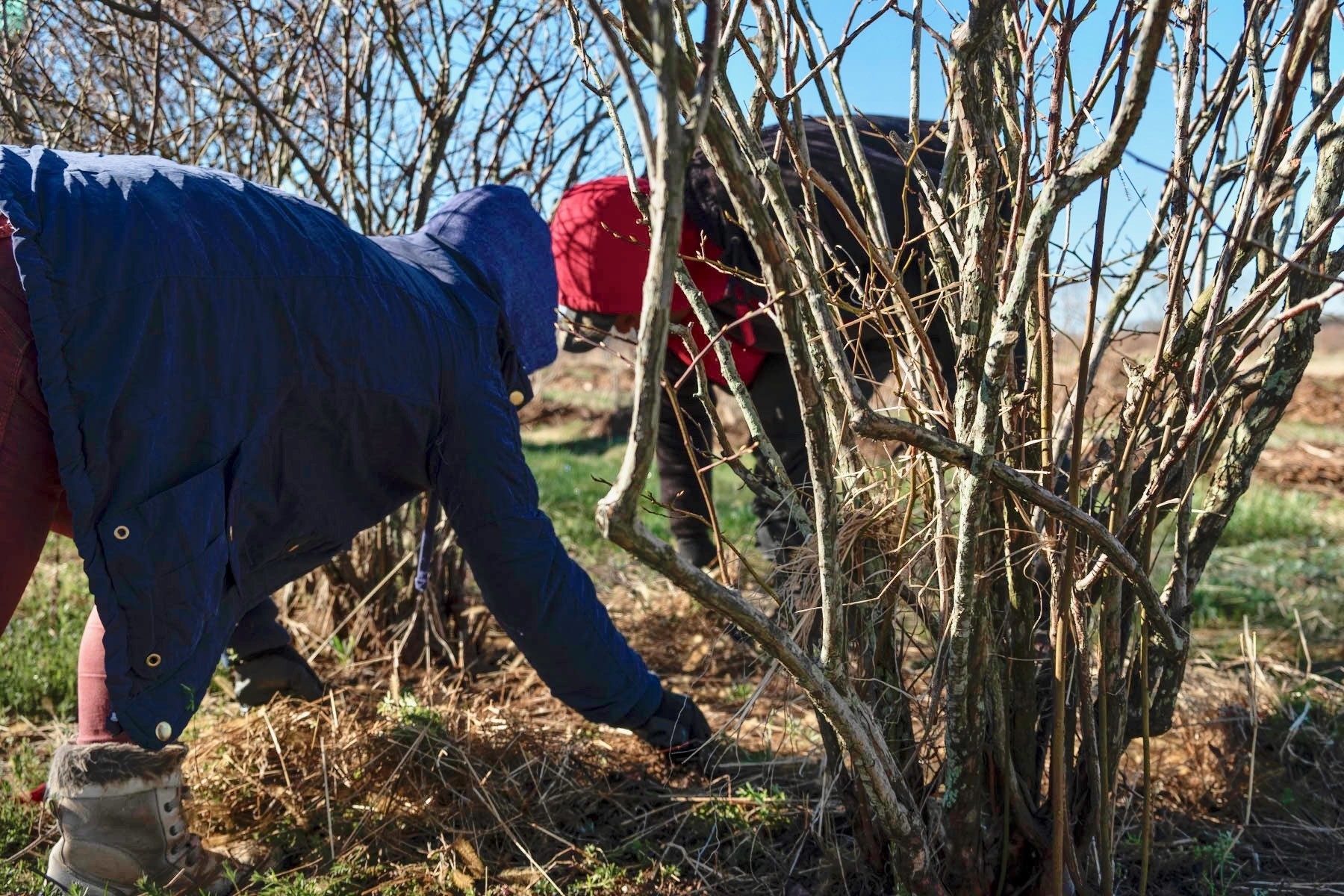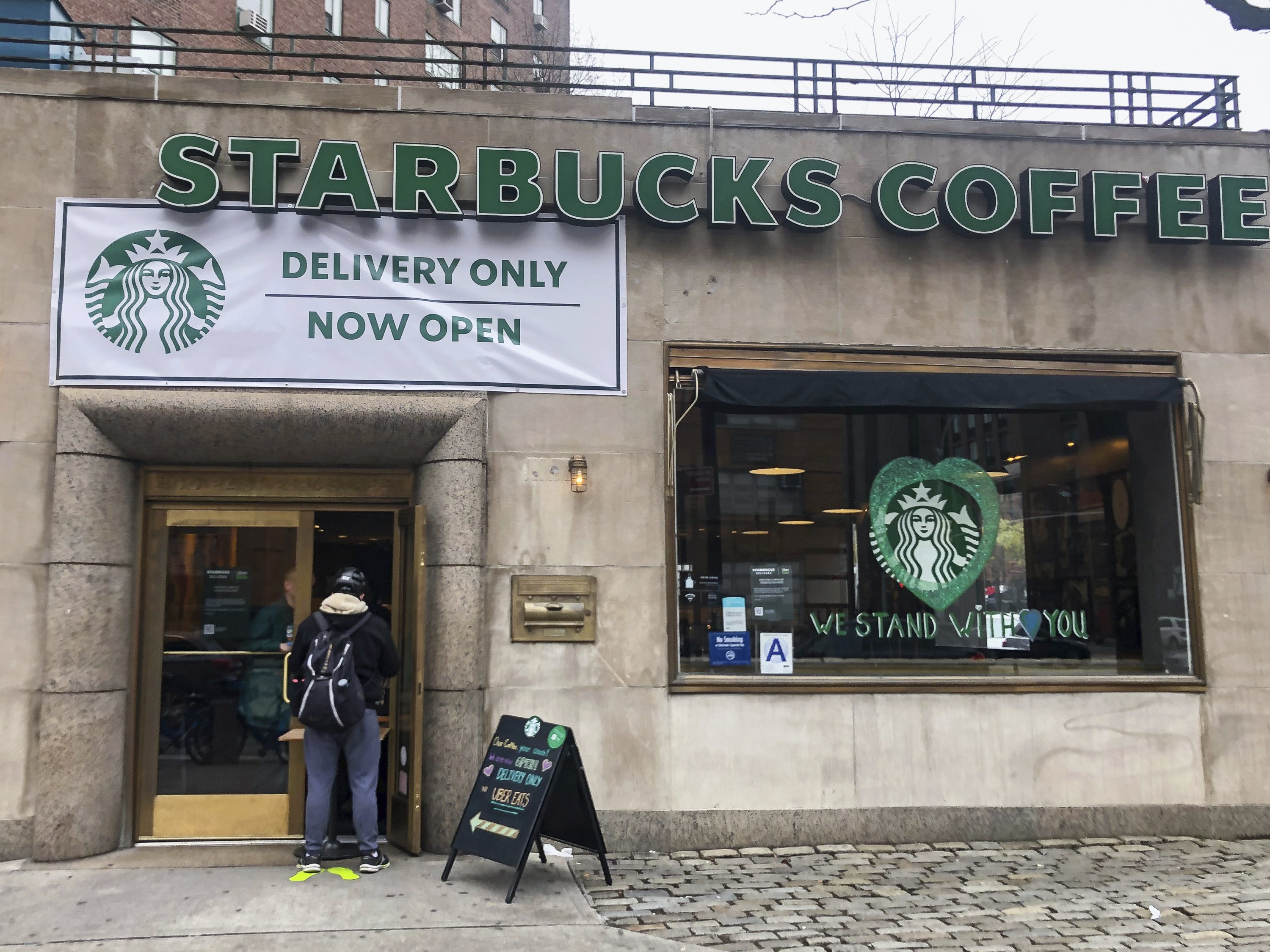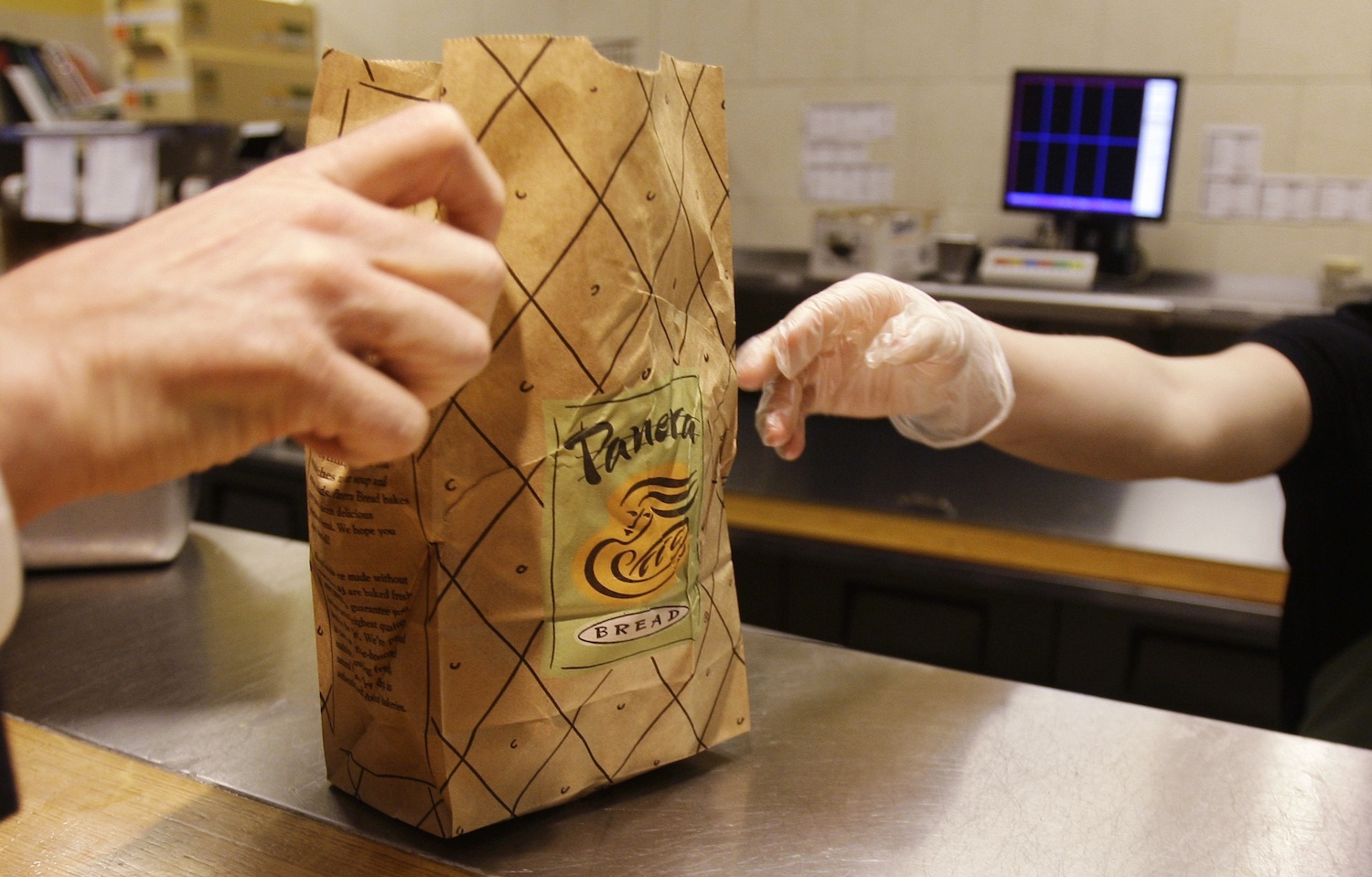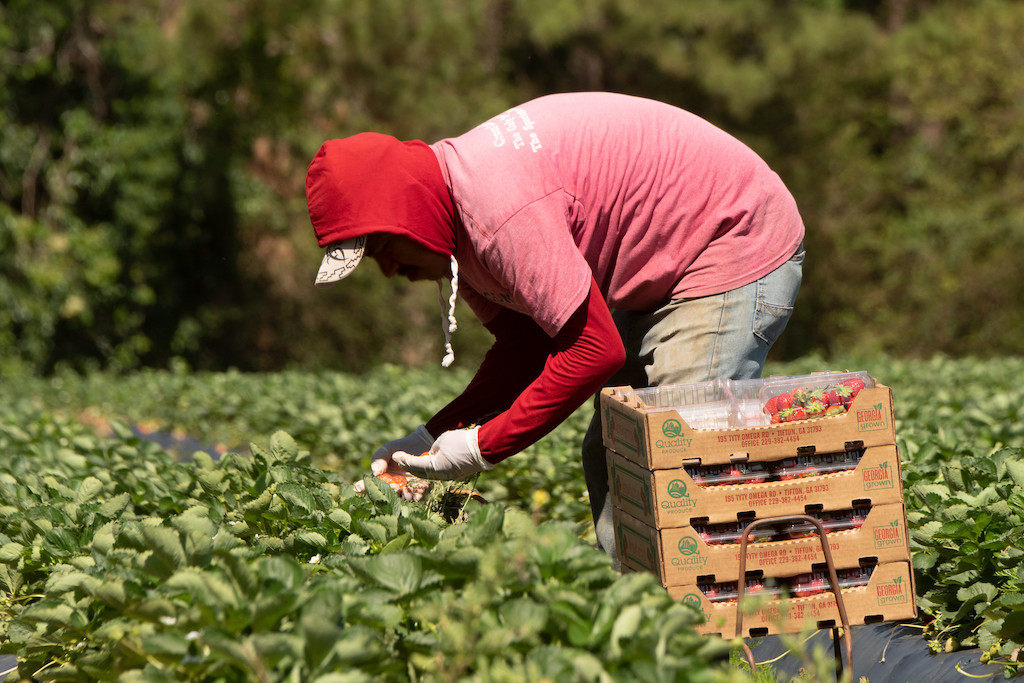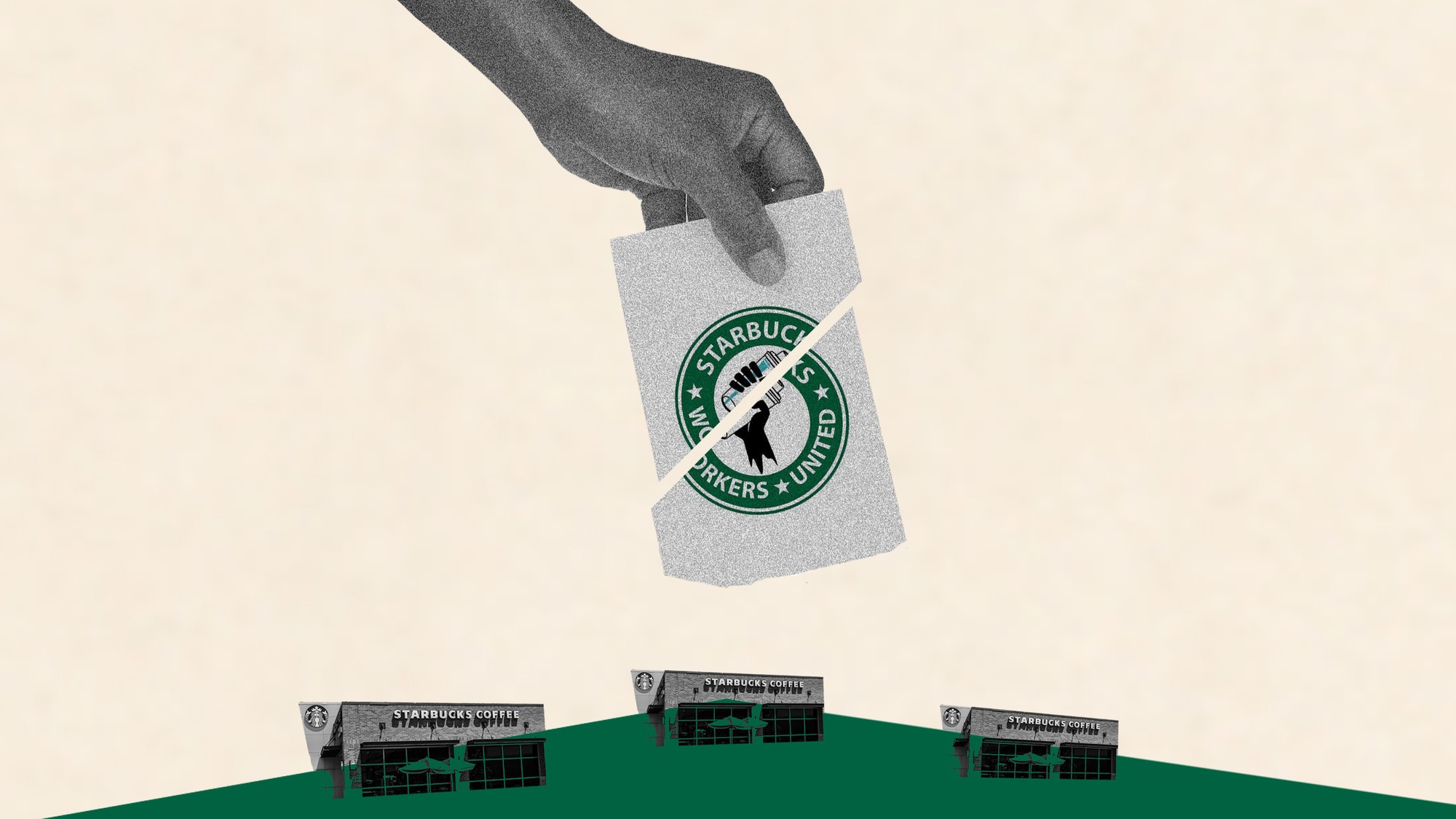
Graphic by Alex Hinton/iStock photka/iStock jetcityimage/Starbucks Workers United
Despite months of aggressive corporate opposition, employees overwhelmingly voted in favor of union representation at one store. Workers at a second store appeared to decide against unionizing, while a third remains undecided.
Starbucks workers at one location in the Buffalo, New York, area voted overwhelmingly to form a union Thursday. The vote followed a months-long campaign, aggressive opposition from the corporation, and a remarkable personal intervention by former CEO Howard Schultz.
Three stores voted separately on whether its workers wanted to be represented by Workers United, an affiliate of the Service Employees International Union. Workers from the Elmwood Avenue location cast ballots 19 to 8 in favor of union representation. At the Camp Road location, workers voted against it 8 to 12, with 2 challenged ballots, which is where either Starbucks or the union contests the eligibility of an individual vote. Workers voted 15 to 9 in favor of unionization at the Genesee Street location, with an additional seven challenged ballots that could potentially change the final outcome.
The Elmwood location is now the only unionized, company-owned Starbucks store in the United States, marking the first time in recent history that its workers have successfully organized. (Starbucks has licensing agreements with companies that employ unionized workers, but it does not employ them directly.)
Starbucks workers were seeking union representation in response to difficult working conditions they said had plagued their stores for years and had only worsened under the pandemic. They hope to ultimately achieve better pay, staffing, and health care benefits, as well as more input on store operations.
The Elmwood location is the only unionized, company-owned Starbucks store in the United States, marking the first time in recent history that its workers have successfully organized.
“We’re looking for a bigger voice in the company,” Michelle Eisen, a barista at the Elmwood Avenue location, said at a press conference last week. “I myself have been with the company for over a decade. I make about [63 cents] more than somebody who was hired yesterday, an hour. In spite of all of that, it’s a company that I’m still very proud to be with, and I’d like to bring them back to where they were when I started with them.”
Following Thursday’s vote, Rossann Williams, president of Starbucks North America, wrote in a statement shared with The Counter: “The vote outcomes will not change our shared purpose or how we will show up for each other. We want to protect partner flexibility, transferability and benefits across all stores in a market or a district because we know that’s important to partners. This is why we strongly believe that every partner in a district or market should have the opportunity to vote on such an important decision.”
Food service establishments have been historically difficult to organize, with Starbucks itself quashing organizing efforts in New York City and Philadelphia over the past two decades. The industry had one of the lowest unionization rates last year—only 1.2 percent, compared with 6.3 percent for all private-sector workers, according to the Bureau of Labor Statistics—and the challenges for organizing these types of workplaces are numerous. Turnover is high and many employees don’t stay long enough to feel invested, while a 2020 National Labor Relations Board (NLRB) ruling limited the gains employees could make by organizing at fast-food companies. Current U.S. labor law also allows employers’ generous leeway to undermine unionization efforts, with weak penalties for companies who cross the line, said Cathy Creighton, director of the Cornell University School of Industrial and Labor Relations Buffalo Co-Lab.
Referring to companies legally interfering with and weakening union drives, Creighton added, “It’s shooting fish in a barrel because the state of the law allows them to do so much stuff.”
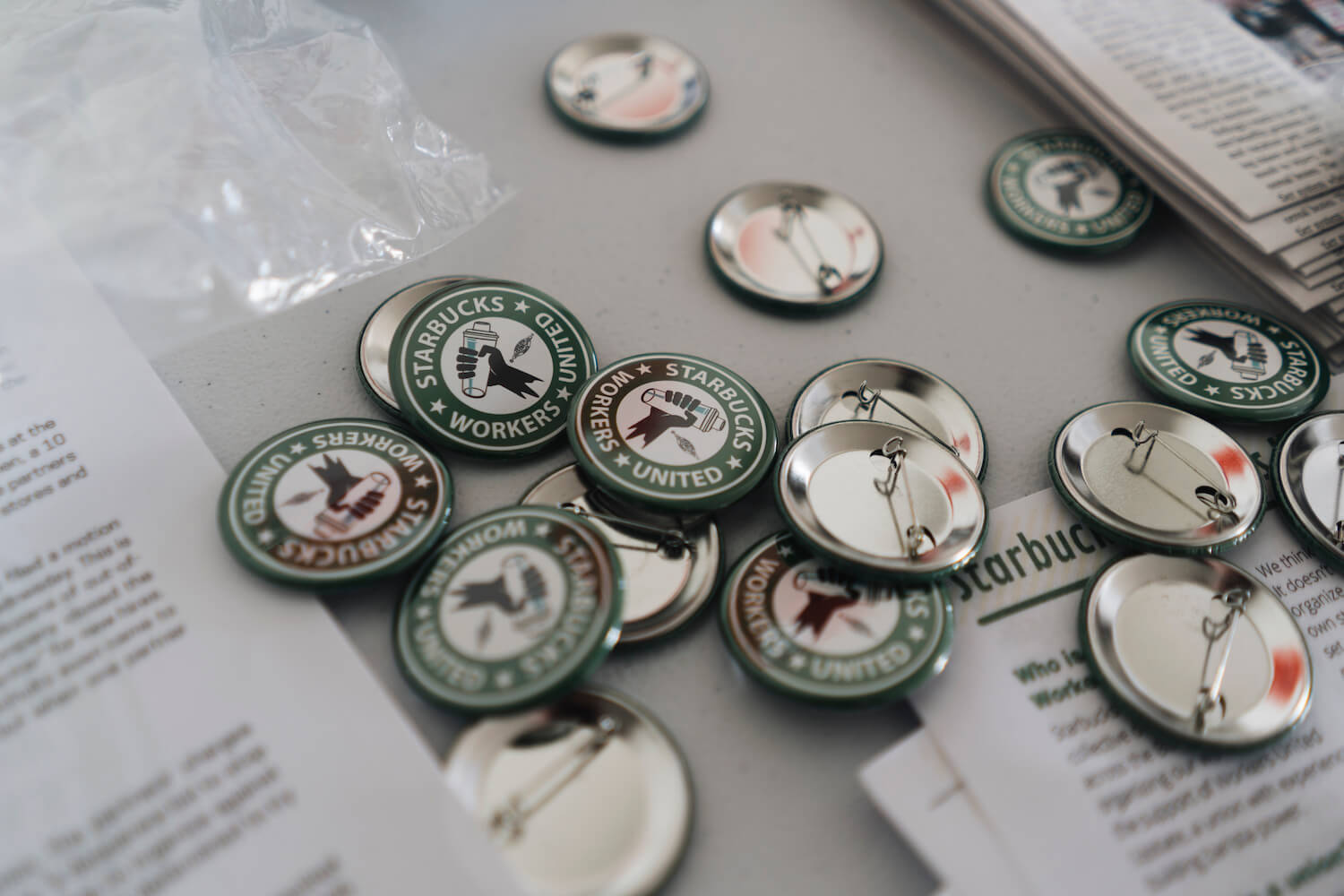
Starbucks workers were seeking union representation in response to difficult working conditions they said had plagued their stores for years and had only worsened under the pandemic.
Libby March for The Washington Post via Getty Images
But in recent years, there’s been a surge of successful union drives among foodservice employees, particularly at coffee shops. Workers’ reasons for organizing are commonplace across the industry: low wages and poor benefits, difficult scheduling, and challenging work environments. And while the Buffalo Starbucks stores account for a tiny slice of the chain’s nearly 9,000 company-owned locations in the United States, the election win today could inspire others in hospitality and beyond to consider organizing.
Already, the workers’ organizing efforts have reverberated across the company, with an additional three stores in the Buffalo area filing petitions with NLRB in November for union elections, as well as one store in Mesa, Arizona.
“A lot of people, it doesn’t occur to them that they can band together and have a voice at work,” Creighton said. “I think this will make people think, ‘Huh, I can do that.’”
The Starbucks union drive emerged during a period of heightened labor unrest among workers. With the tight labor market putting an unusual amount of leverage in workers’ hands, thousands of employees at companies including Kellogg Co. and Nabisco have gone on strike to demand better benefits and working conditions, while others launched efforts to organize their workplaces.
Employees at the coffee giant said that although the pandemic was the catalyst to their organizing efforts, problems with understaffing and seniority pay had been festering long before March 2020.
Employees at the coffee giant said that although the pandemic was the catalyst to their organizing efforts, problems with understaffing and seniority pay had been festering long before March 2020. But the pandemic quickly exacerbated ongoing issues while introducing a host of new ones. Workers said they endured chronic worker shortages, had to sanitize the store and enforce shifting mask enforcement policies, and faced increased pressure to quickly fill drive-through and mobile drink orders, all while risking exposure to the coronavirus.
“We were given masks and hand sanitizer and disinfectant spray and a timer that went off every 30 minutes that told us it was time to go wash our hands,” Eisen said. “But beyond that, there was nobody else there keeping us safe.”
The campaign quickly garnered support in the Buffalo region and beyond, with workers sharing on-the-job horror stories, and customers around the country cheering on Starbucks employees and placing drink orders with “Union yes” alongside their names. Politicians like Representative Alexandria Ocasio-Cortez, Democrat of New York, and Senator Bernie Sanders, Independent of Vermont, have also showcased their solidarity with the union; the latter even hosted a virtual town hall with Starbucks workers earlier this week.
“We were given masks and hand sanitizer and disinfectant spray and a timer that went off every 30 minutes that told us it was time to go wash our hands. But beyond that, there was nobody else there keeping us safe.”
“We have a company that is doing phenomenally well, we have workers who are struggling to put food on the table to pay off their student debt,” Sanders said. “And in Buffalo, New York, workers there are standing up and demanding a union.”
Shortly after the Starbucks employees announced their intent to unionize, executives and managers from across the country flew in to enact damage control in Buffalo. They held “listening” meetings where they attempted to dissuade employees from joining the union, pro-union workers have said, along with temporarily shuttering stores that had filed petitions for union elections and filling shops involved in the campaign with new employees. In early November, the union filed an unfair labor practice charge with NLRB in response to the company’s actions during the campaign, accusing it of “engaging in a campaign of threats, intimidation, surveillance, solicitation of grievances, and the closing of facilities, among other conduct.”
“All of the elections, none of these were fair and legal elections,” Alexis Rizzo, a shift supervisor at the Genesee Street location, said at a press conference following Thursday’s votes. “We were subjected to all sorts of nonsense.”
Last month, former Starbucks CEO Howard Schultz held a meeting with Buffalo employees for almost an hour, discussing the company’s history as well as its concern for its workers, pointing to the available health care and stock benefits. In a letter, Schultz wrote that he was upset to hear that employees thought they needed representatives “to obtain things we all have as partners at Starbucks,” using the company’s term for its workers.
A Starbucks spokesperson told The Counter that the company sent executives and extra managers to Buffalo and temporarily converted one of its stores into a training location to help with staffing issues. Starbucks has also denied worker allegations that it violated labor law during the union drive. The company claims that it supports workers’ right to organize, but that it believes that Starbucks does not need a union.
“If they get a good contract, that could mean hundreds of other stores, other fast food stores, will try to unionize. Whereas if they have a strike and they’re replaced, things are drawn out, it gets ugly, nothing happens, it could be demoralizing for people.”
Throughout the campaign, the company has contended that workers across the roughly 20-unit Buffalo area should vote in a single election, versus store-by-store elections. The NLRB, however, has repeatedly rejected the company’s argument and refused to delay the election or halt vote counting.
Any party has seven days to file objections to NLRB’s regional director, and must provide proof of their claim. The union said it plans to file an objection to the preliminary results for the Camp Road election on the grounds that at least three ballots it says were delivered to the NLRB’s regional office in Buffalo had not been included on Thursday.
Once the votes are certified, unionized Starbucks workers in Buffalo have a long journey ahead. There are several ways the company can undermine or thwart the process, resulting in the formation of a union but not necessarily the ratification of a contract the employees actually want.
“If they get a good contract, that could mean hundreds of other stores, other fast food stores, will try to unionize,” said Matthew Bodie, a law professor at St. Louis University. “Whereas if they have a strike and they’re replaced, things are drawn out, it gets ugly, nothing happens, it could be demoralizing for people.”
Pro-union workers said they’re relying on community support to put pressure on Starbucks to begin negotiating a contract as soon as possible.
“We need government support, we need public support,” said Rizzo. “If there is anyone in the public who is asking how they can help us right now, demand that Starbucks comes in and sits with us at the negotiating table and demand that they uphold our agreement to the things that they claim to be a part of their mission and values.”

